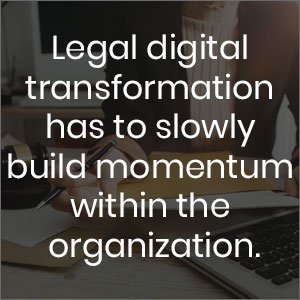The worldwide technology leader has deep roots in technical innovation – a rich tradition that continues in the media and entertainment sector to this day. From a legal operations perspective, the company’s success is supported by legal technology adoption, in particular. Its corporate legal counsels are able to perform at great speeds. They are able to pay close attention to a great many details.
Nevertheless, the company required a significant change to its legal operations. As one organizational leader explained, it needed to ‘make the chocolate chip cookie much bigger’ – and with far more chocolate chips.
IMPLEMENTING A CLM SOLUTION
The company recently deployed a contract lifecycle management (CLM) solution to help with the above. This contract management system (CMS) allowed legal teams to better assemble, automate, approve, sign, and manage thousands of everyday contracts and related documents. And it offered AI capabilities right out of the box.
With a graphically appealing and intuitive interface, this new smart contract repository certainly provided. It facilitated the management of contracts across multiple locations, around the world. It helped teams search for important metadata, including key phrases or clauses. What is more, the software came integrated with Workshare, the market leader in document comparison solutions.
Legal digital transformation has to slowly build momentum within the organization.
OVERCOMING CHALLENGES TO LEGAL TECHNOLOGY ADOPTION
Of course, new technology is only great if it is used by employees. As such, the value of adoption management should never be underestimated. It determines whether or not a new technology actually takes root.
Some of the company’s employees did not appreciate the new CLM software at the very beginning. They were hesitant about its adoption simply because other technologies came short of being widely used in the organization. Most of all, they viewed the use of the system as additional steps in the contract management process.
“But it was plain to see that AI can do a lot of lower-level tasks for us without diminishing the importance of the work that we do as legal counsels,” said one attorney within the organization. “That’s because AI can free us up to do what matters most: the ongoing, strategic work within our legal operations.”
It was the company-wide adoption effort that turned everyone else’s thinking around, too. It was even able to expand its legal capabilities beyond what stakeholders and vendors imagined. After the initial setup of the CLM solution – and the education and training surrounding it – the company’s contract management process became more efficient and effective.
ENGAGING END USERS WITH LEGAL TECHNOLOGY ADOPTION
For starters, the company deployed an internal portal. In this hyper-engaging space, users could get answers from so-called ‘superusers;’ view the latest helpful blog posts; find related information, and seek out other users who could answer more challenging questions. This “engagement portal,” as they came to call it, was built on top of its CLM software and was “super easy” for both legal and business users.
Additionally, employees were treated to a complete, interactive walkthrough of the system. This included basic and advanced information, as well as key dates for training sessions.
A CLM allows you to assemble, automate, approve, sign, and manage thousands of contracts. Essentially, the company brought everybody who interacts with the system together in one ecosystem. This was quite different from having disaggregated engagements, in which the CLM system is merely rolled out and users are invited to training sessions over email.
Finally, it was vital for the technology company to take a step-by-step approach to legal tech adoption. It was important that it did not leave any team member behind. While developing a “culture of change management,” it constantly sought out and received feedback on what was working well and what was working poorly.
As a result, employees started engaging with the new CLM system. So, the next time the company rolls out new technology, people will be far less skeptical of legal digital transformation and much more attuned to change management.
MANAGING LEGAL DIGITAL TRANSFORMATION
Remember that legal tech adoption is as much about shifting the organizational mindset as it is introducing new systems and ways of working. Your people, after all, are important in ensuring that technological innovations like CLM solutions firmly take root.
When this is done exceptionally well, legal digital transformation can make all of the difference for organizations. And if you happen to be working on your own CLM deployment, it helps to work with a solid, award-winning partner – like ContractPodAi – that values innovation as much and as deeply as you do.
Learn how ContractPodAi is facilitating contract management for other companies around the world. Request a demo with ContractPodAi today!
Author:

Sarvarth Misra
Connect with us on Linkedin










